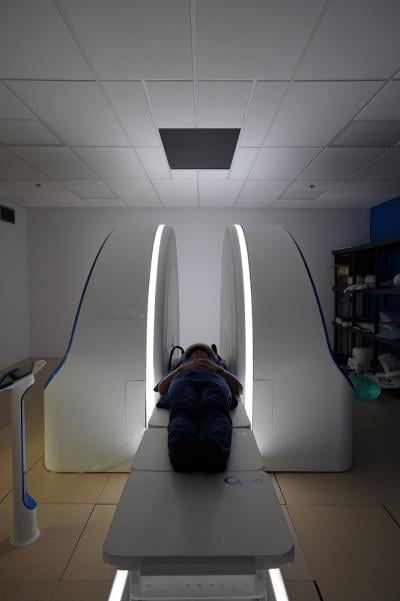Q Bio aims to have people reconsider the possibilities of an MRI machine, with an advance in computing that could one day enable new uses for the diagnostic imaging hardware.
MRIs have excelled at providing a snapshot of the inside of the body—especially for clinicians seeking the causes behind a condition, such as a stroke, trauma or cardiac disease. However, those findings have always been subject to interpretation: The machine takes the picture and the radiologist reads it.
While the use of artificial intelligence has grown by leaps and bounds among its siblings in digital imaging, notably in analyzing X-ray and CT scans, algorithm development in MRI has been a tougher climb. A seemingly unknowable amount of factors and variables between different equipment, hospital settings, and how the machines are used have made picking out the true signals in the noise a difficult task.
Q Bio hopes to clear things up by offering quantifiable MRI, where a single scan can provide an easy-to-read assessment of the entire body and its various tissues.
Dubbed tensor field mapping, the approach is designed to be reproducible across both patients and machines—allowing repeated scans of the same person to accurately chart out changes in the body over time, while facilitating more data generation to help build the foundation of future AI applications.
“There are many studies that show you can put the same person in the same scanner and still get different results—different pictures come out of it depending on the patient’s breath hold, or the angle that the MRI tech took the picture, and then the radiologist’s interpretation comes from all that,” Q Bio chief operating officer Clarissa Shen said in an interview.
“That's fine when you're doing it for acute diagnostic purposes and you just need a one-off,” Shen added. “Our goal in quantified imaging, and where tensor field mapping comes in, is that we want highly reproducible imaging data—whether you're looking at a patient today or tomorrow, or from one scanner to another—so that you can do longitudinal tracking, and get real measurements versus a subjectively read measurement.”
“And when you’re talking about AI, you need highly reproducible, high-quality data to build those second- and third-generation models,” she said. “Because if you take the data that's out there today—and we've proven this and shown this—you get hallucinations very quickly.”
According to the company, quantifiable MRI approaches have been sought after for more than a decade but were once seen as computationally impossible. Its tensor field mapping approach to cracking the code is built on years of advancements in chips and processing power, which allows the construction of a digital co-simulation alongside the scan.
“We put everything in—all the imperfections of the machine that we know about, the parameters of the environment—everything goes into this model,” said Q Bio VP of radiomicsThomas Witzel. “I mean these matrices are absolutely huge, with millions of unknown parameters. So it’s basically a computer engineer’s nightmare.”
Still, in future practice, completing a quantified scan could be possible with a 100-fold reduction in relative computational power—taking just minutes while relying on a single GPU, the company said.

Q Bio plans to build tensor field mapping into its own, purpose-built MRI machine. Called the Mark I, the upcoming open-design, full-body system is slated to operate largely automatically at lower magnetic field strengths compared to hospital scanners, and will not require shielded rooms or specialized cooling hardware.
The goal is to provide a high-throughput and affordable approach to MRI that will lend itself to tracking changes over time, and support the company’s other work in building digital twin models—which also incorporate an individual’s DNA and biochemical analyses of blood and urine. Q Bio currently offers whole-body, benchmark-setting exams through its pilot site in Redwood City, California, priced at $3,495 a piece.
With tensor field mapping MRI, the company aims to capture figures such as the percentage of fat throughout the body—or, for example, fat specifically within and around organs like the liver and heart, forming two important factors in cardiometabolic conditions.
“We are very much working towards the long-term vision that this becomes a preventive screening option,” said Shen. “This is really about changing how we think about personal baselines in health, and establishing even a baseline for health… Because today we have a lot of acute disease definitions, but we don't have a lot of definitions for what a healthy baseline actually looks like.”
In terms of taking this technology to the larger players in digital imaging, Shen said the company is open to partnerships but it would require deep knowledge, access and potentially modifications to the scanners’ hardware in order to build computing models that work. Even then, larger, traditional machines may not be accessible enough for what Q Bio has in mind.
“We want to get to an endpoint where this is something not only for the people who otherwise like to spend a lot of money but something that can be applied on a population scale,” said Witzel.